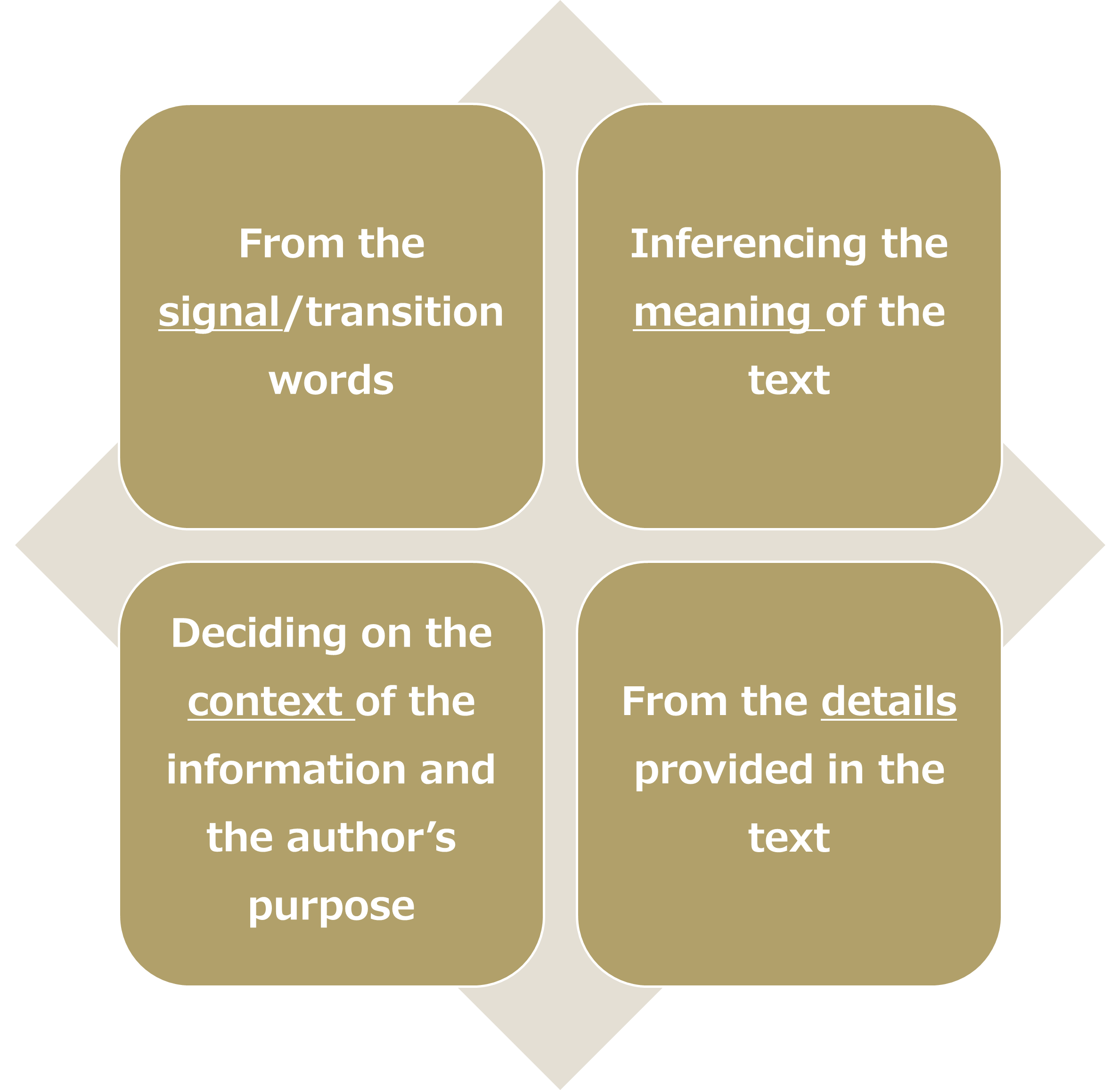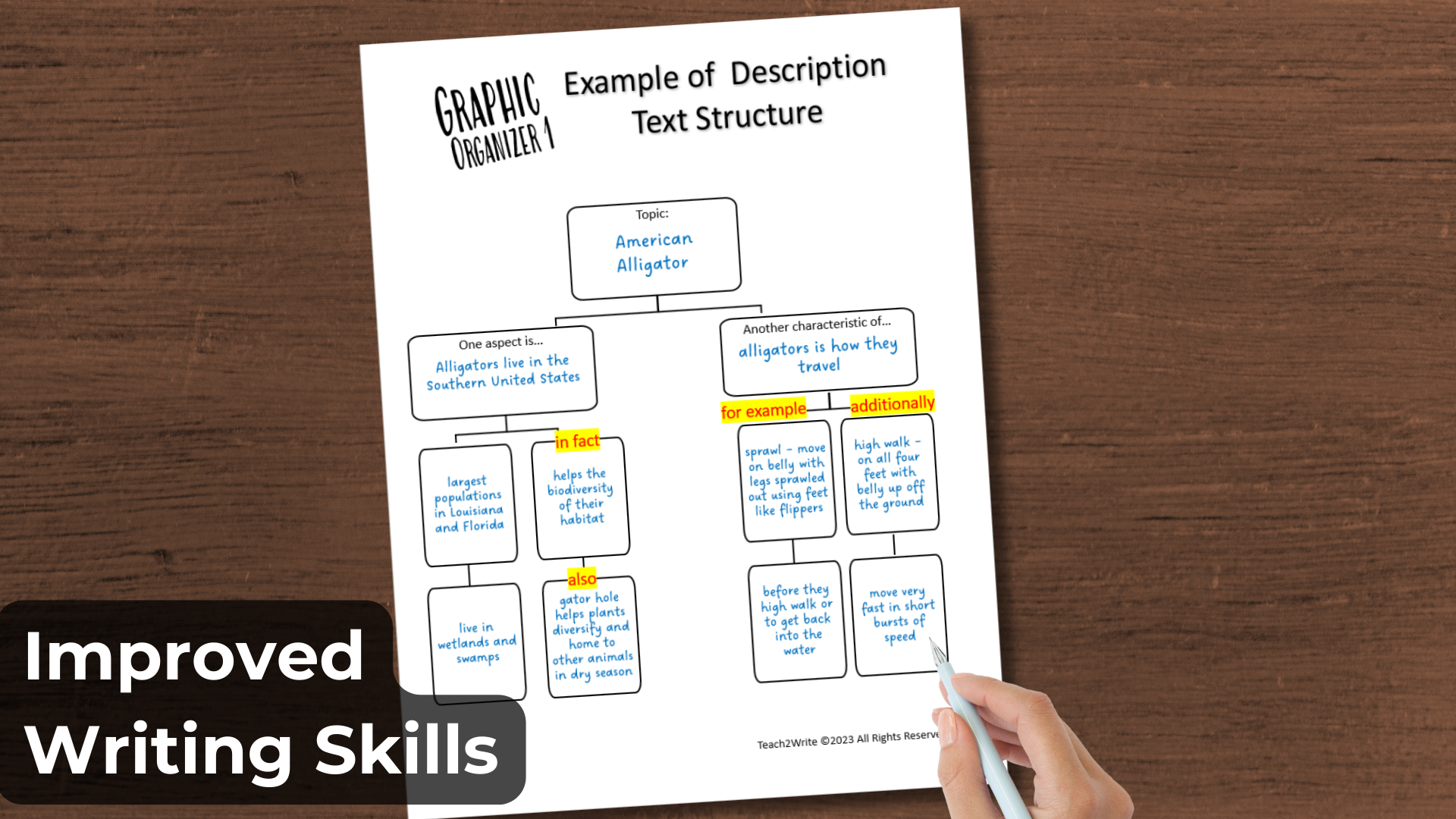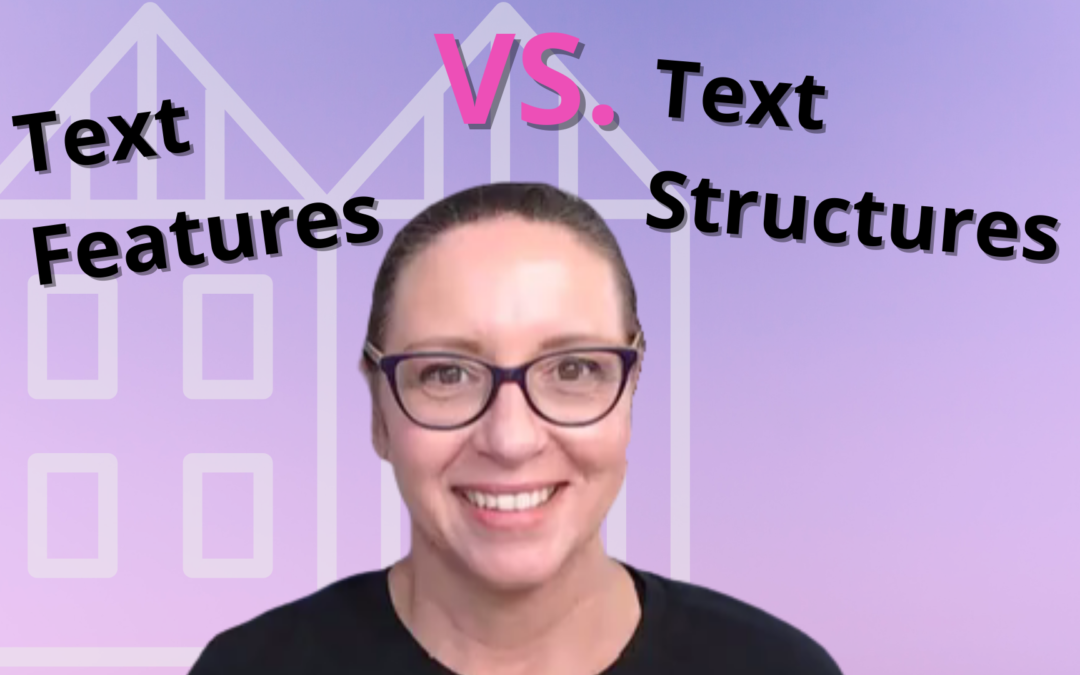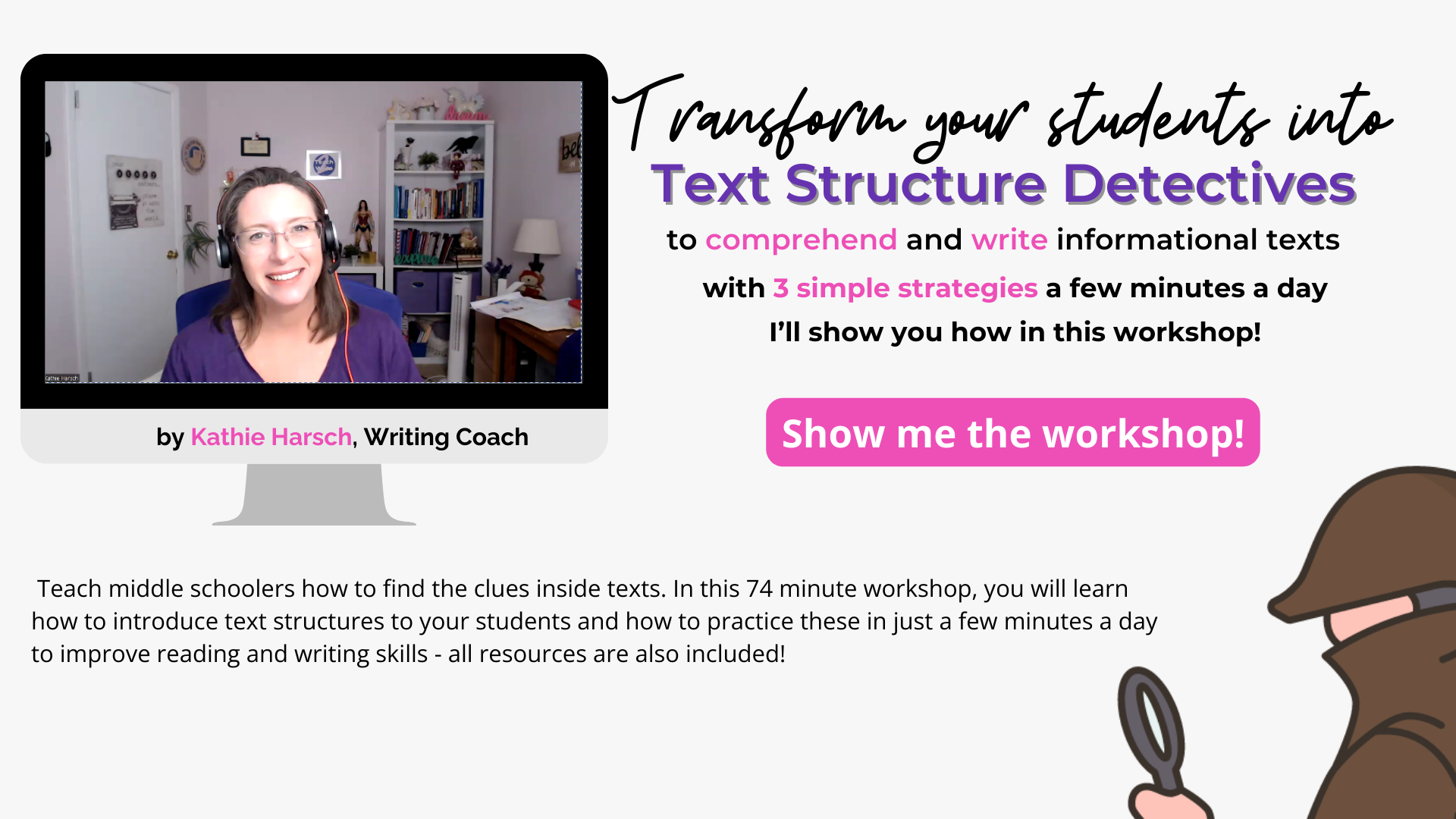Text features vs text structures: how to introduce text structures to your students. Middle school students really need to learn how to use text structures for both reading and writing so that’s what I’m going to talk about in this blog post.
Text Features Confused with Text Structures
First things first, students often confuse text structure with text features. So, one thing you need to do is teach them the difference between text structure and text features.
Now, both of them help with the organization of a text, especially informational text. However, one is more visual, and the other one you must get through reading because text structure is not always obvious.
So, text features are things like heading subheadings, images, captions, graphs, diagrams, and bulleted lists. Those help students visually key in on certain details, but text structures are more inside the text.
Students must dig into the text and become text structure detectives to find what organizational patterns the writer is using. Students must look at transition words and figure out the author’s purpose in order to determine the text structure being used.
Sometimes, an author is using more than one organization pattern within a text, depending on the length of the text.
For example, in a how-to article like this one, I used several different text structures. Actually, I just used definition and description. I just used compare and contrast. So, there are many different text structures that a writer may use within one informational piece.
How to Differentiate Text Features vs. Text Structures
One way to differentiate text features and text structures for students is this: Think about a house.
For example, for the features of a house we often look at things like the yard, garden, garage, front door, double front door, windows in the door, windows of the house.
Are they front facing windows? How big are they? Does the house have French doors in the back? What color is the house? What kind of roof does the house have?
These are all features of a house.
Additionally, like house features, text features are what readers notice right away – headings, subheadings, captions, graphs, and so forth.
However, the structure of a house is much different. The structure of the house is from the foundation up. We often don’t see or really notice the house’s structure unless someone points it out to us – wall mounts, frame work, joists, columns, or rafters. House structures are often covered up by things like drywall or paint. They are often embedded in the home.
Yet without these internal structures, we wouldn’t be able to construct rooms or floors or ceilings.
Much like these embedded structures of a house, text structures are embedded in a text and take some time and training to notice. Text structures use transition or signal words, which are woven throughout a text.
The Importance of Teaching Transition Words
Inside text structures writers can include descriptions, facts, definitions, opposing ideas, and so forth. Yet, because transition words are embedded in the text, students often don’t notice them.
So, that’s why we must teach how these transition words help to structure a text and give the text meaning. Your students will need ongoing practice to become proficient at identifying and using text structures, which are vital to their comprehension.
Also, writing must have a purpose and a flow. It has to be organized. And in order to do that, writers need to give the reader some sort of a framework to use.
That’s why it’s important to learn and use text structures, so writers can build a text that readers can understand.

Text Structures Create Organizational Patterns
Human brains crave organizational patterns – we look for patterns everywhere. Therefore, students need to be text detectives, and look for the patterns, look for the clues that the author is giving the reader.
Or they might have to create their own clues for their own readers to follow in order to present their evidence.
This ability to find and use patterns, especially language patterns is what makes the ability to communicate amongst humans possible. We wouldn’t understand each other without organizational patterns.
The 5 Basic Informational Text Structures
So, it’s imperative that we teach our students, at least, the five basic informational text structures in our writing workshop.
Now, there are more text structures than these five. It depends on what the purpose of a text is and what kind of writing you’re doing. Nonetheless, these are the basic informational structures usually used in expository writing.
Description
Description includes sensory details, facts, statistics, definitions, metaphors, etc.
One very important point I need to make here is: DESCRIPTION IS INSIDE EVERY TEXT STRUCTURE.
Therefore, when students are trying to figure out a text structure, we teach them to look for description first. Then, we tell them that they’re going to find description in every other type of text structure as well.
Because we need, as human beings, description to understand what’s going on in the world around us. We also use the other text structures to organize the details we find in description.
Sequence of Events
Sequence of events or chronological order will be looking at events along some sort of timeline. Students need to know the signal words for this text structure.
Compare and Contrast
Students must learn to compare one thing to another thing. It is how their brains learn to differentiate one thing from another. This helps students to develop strong analytical skills.
Cause/Effect
Use cause/effect for anything historical or scientific. Teach them they might be looking for one cause with several effects, or one effect from several causes.
Problem/Solution
For problem/solution, an author defines a problem. They explain why it’s a problem, describe it with detail, and then they talk about some solutions. That would probably be very useful in an argumentative or persuasive essay for students to write.
When you introduce text structures, you want to make sure that students have a list of the five different text structures and the signal words that go with them.
Additionally, they need the definitions for each type of structure. Also, you might want to teach them different graphic organizers they can use.

Concluding Ideas for Text Features vs. Text Structures
You must teach them the difference between text features and text structures before you start introducing text structures. Use the house analogy to help you explain the differences.
Next, give students a list of the 5 basic text structures, and start using short sentences or paragraphs for students to identify the text structures.
Concurrently, give students short writing assignments (sentences or paragraphs) where they use the text structures in their own writing. Like comparing and contrasting themselves with a friend for a bell ringer.
Continue practicing text structures throughout the school year, so students will continue to look for these structures to help them to determine author’s purpose, bias, and central ideas of a text.
Text Structures Detective Workshop
I have developed a professional development workshop for teachers where you can learn exactly how to introduce these text structures to your students with engaging activities using a detective theme.
Six short videos teach you how to introduce and practice text structures with your middle school students using three simple teaching strategies. I’ve also included a pretest and post test so you can evaluate their progress.
All printable and digital worksheets as well as lesson plans, keys and rubrics are included along with the presentation slides. So, basically, you watch the videos to learn how to implement everything, and the rest is ready to go.
Click here to find out more about the Text Structures Detective Workshop.


